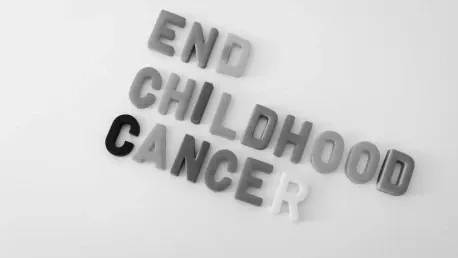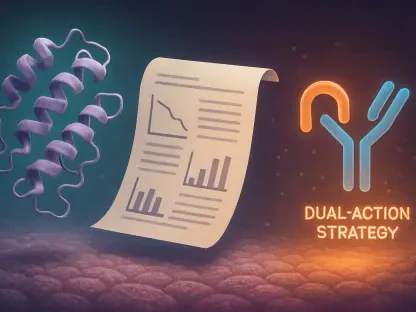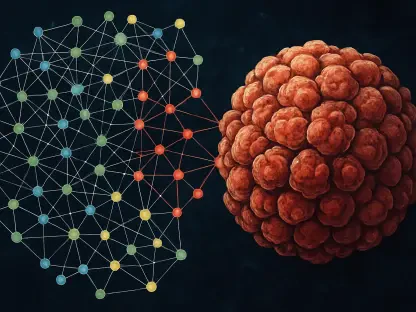In recent years, significant advancements have been made in treating pediatric acute lymphocytic leukemia (B-ALL) through combining traditional chemotherapy with innovative drugs like blinatumomab. This blend of treatments, examined in a clinical trial, has shown promising results, particularly in the case of a young patient named Bentley. Diagnosed in 2019, Bentley’s successful remission offers hope to families affected by this challenging diagnosis. The trial’s outcome underlines the potential of combining new drugs with established therapies, opening new avenues in pediatric cancer treatment.
Highlighting Bentley’s Journey and the Clinical Trial
Bentley’s Diagnosis and Enrollment in the Trial
In 2019, Bentley, a young boy diagnosed with precursor B cell acute lymphocytic leukemia (B-ALL), faced a daunting health crisis that struck at the core of his family’s well-being. The devastating diagnosis marked the beginning of a difficult journey, characterized not only by emotional turmoil but also by numerous medical challenges. The relentless pursuit of viable treatment led to his enrollment in a clinical trial spearheaded by the University of Oklahoma Health Sciences. This trial, which sought to investigate the efficacy of combining the drug blinatumomab with chemotherapy, offered a glimmer of hope amidst the prevailing uncertainty. Remarkably, within just a month of participating in the trial, Bentley’s leukemia went into remission, marking a significant milestone in his recovery.
Bentley’s case underscored the tremendous potential of this clinical trial as his condition not only improved but led to him being disease-free today. The rapid and sustained remission allowed Bentley to resume a semblance of normalcy, significantly improving his quality of life and instilling newfound hope within his family. The emotional and psychological impact of such a positive outcome cannot be overstated, as it reinforced the bond within Bentley’s family, who had valiantly navigated the roller coaster of emotions and medical interventions. This treatment not only addressed the physical manifestations of B-ALL but also transformed the family’s dynamics, anchoring them back to a place of stability and optimism.
The Scope and Success of the Clinical Trial
The clinical trial examining blinatumomab in combination with chemotherapy encompassed an impressive 228 sites worldwide. Sponsored by the Children’s Oncology Group, a cooperative group funded by the National Cancer Institute, the trial was extensive and well-coordinated to ensure comprehensive and reliable data collection. The results obtained were so significant that the trial was halted prematurely, a measure taken to benefit all eligible participants from the newfound treatment efficacy. Specifically, the data revealed that 96% of children with standard-risk B-ALL who received blinatumomab in addition to chemotherapy did not experience a relapse at the three-year evaluation mark. In stark contrast, only 87.9% of the patients who were administered just chemotherapy without blinatumomab showed the same level of non-relapse, delineating the profound impact of the combined therapy.
The success of this clinical trial highlighted a critical advancement in pediatric leukemia treatment, offering an improved prognosis for children diagnosed with this potentially life-threatening illness. By integrating blinatumomab with existing chemotherapy protocols, the treatment regimen effectively enhanced the survival rates, establishing a new standard for clinical practice in oncology.
Breaking Down the Mechanism: Blinatumomab’s Role
How Blinatumomab Operates
Dr. Rene McNall, the pediatric hematologist-oncologist leading the trial, emphasized the protein’s unique function in advancing cancer treatment. Blinatumomab is an antibody drug that operates on an innovative mechanism, where one “arm” of the antibody recognizes and binds to leukemia cells while the other engages T cells, the body’s natural cancer-fighting cells. This dual recognition facilitates the targeted destruction of leukemia cells, directly harnessing the patient’s immune response to fight malignancy through precision medicine. One of the key benefits of this targeted approach is its specificity, which significantly minimizes the side effects commonly associated with traditional chemotherapy treatments.
Compared to conventional chemotherapy, which can indiscriminately affect both healthy and cancerous cells, blinatumomab’s selective targeting ensures a more efficient eradication of cancer cells while sparing normal cells. This translates into a marked reduction in systemic side effects, enabling patients, particularly young children, to endure treatment with better tolerance and fewer complications. The treatment protocol involves patients carrying a continuous intravenous (IV) infusion of the drug in a portable backpack. This setup allows children to receive medication at home, diminishing the need for prolonged hospital stays and promoting a semblance of normal daily life amid treatment.
Expansion of Blinatumomab’s Application
Initially, blinatumomab trials were focused on patients whose leukemia had relapsed, and the results were exceedingly promising. Consequently, researchers extended the trial to include standard-risk patients who typically had a higher survival rate, about 85%, even before the introduction of this drug. The additional 10% improvement in survival rates achieved with the blinatumomab and chemotherapy combination represents a significant leap forward in pediatric oncology. Reducing the mortality rate further, this enhanced treatment approach underscores the potential to transform cancer care protocols substantially.
The development and deployment of blinatumomab as part of a therapeutic regimen illustrate a pivotal shift towards more personalized and less invasive cancer treatments. The reduced side effects, coupled with enhanced survival outcomes, spotlight the need for continued investment in clinical research and the integration of novel therapies. Blinatumomab’s success story is a testament to the advancements made possible through collaborative research, translational medicine, and the unwavering pursuit of better treatment options for young cancer patients.
Transformative Impact of Blinatumomab in B-ALL Treatment
A New Hope for Affected Families
The success of blinatumomab in conjunction with chemotherapy has laid the foundation for a transformative impact in treating pediatric B-ALL. Bentley’s story of remission and renewed life prospects vividly exemplifies the potential these treatments carry. For families grappling with a diagnosis of pediatric leukemia, these developments bring an essential sense of hope and a concrete possibility of improved outcomes. The success also demonstrates the importance of continued innovation and clinical trials in discovering and validating new treatment paradigms.
Such advances in medical treatment underscore the significance of continued funding and research in the field of pediatric oncology. As clinical trials grant access to innovative therapies, countless children and their families stand to benefit from breakthroughs similar to Bentley’s case. The successful results of this trial advocate for the early inclusion of effective drugs like blinatumomab in standard treatment protocols, redefining the approach toward combating pediatric leukemia.
Clinical Research and Future Directions
In recent years, there have been significant advancements in treating pediatric acute lymphocytic leukemia (B-ALL) by integrating traditional chemotherapy with newer drugs such as blinatumomab. This innovative approach has been explored in clinical trials, demonstrating particularly promising results. One compelling example is the case of Bentley, a young patient diagnosed in 2019, who has achieved successful remission. Bentley’s story offers hope to many families dealing with this difficult diagnosis. The outcome of this clinical trial highlights the potential benefits of combining new drugs with established therapies, paving the way for better pediatric cancer treatments. This method not only enhances the effectiveness of the treatment but also provides renewed optimism for both patients and their families. These advancements represent a significant step forward in the ongoing battle against pediatric cancer, showcasing the importance of continuous research and development in the medical field.









